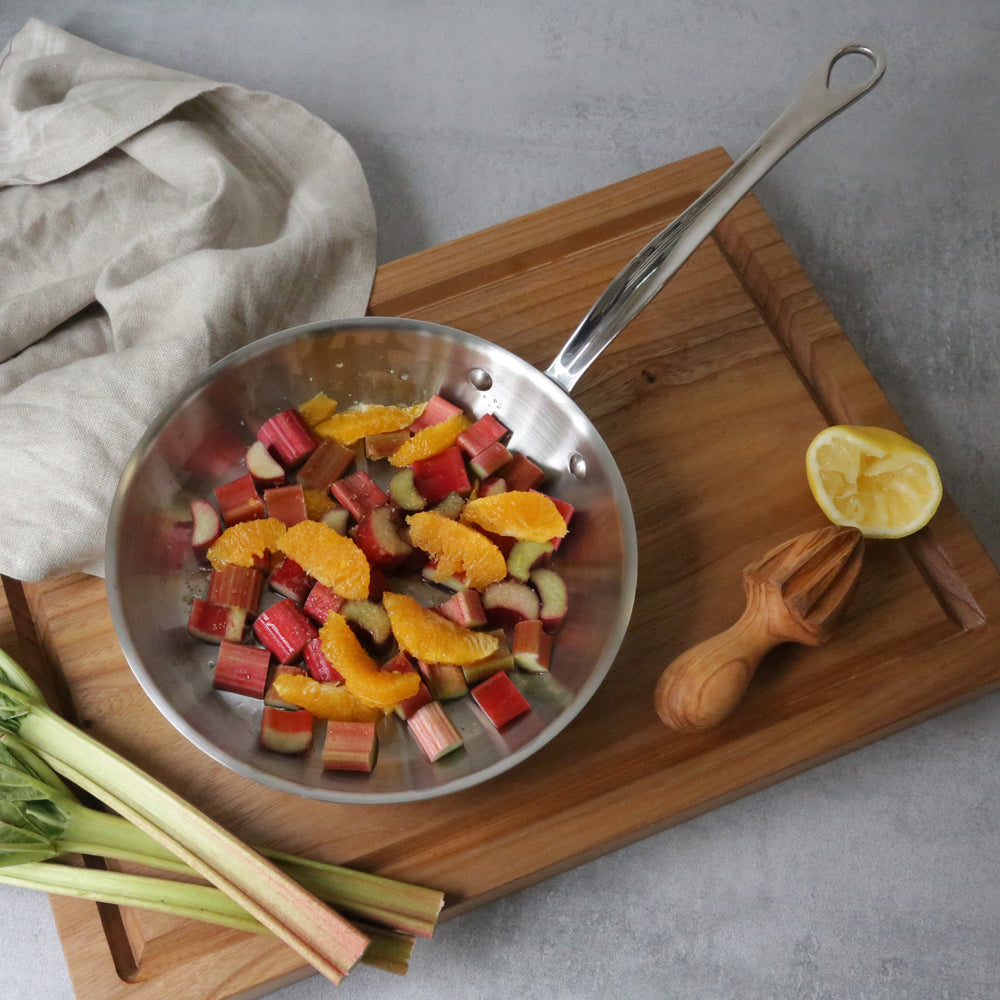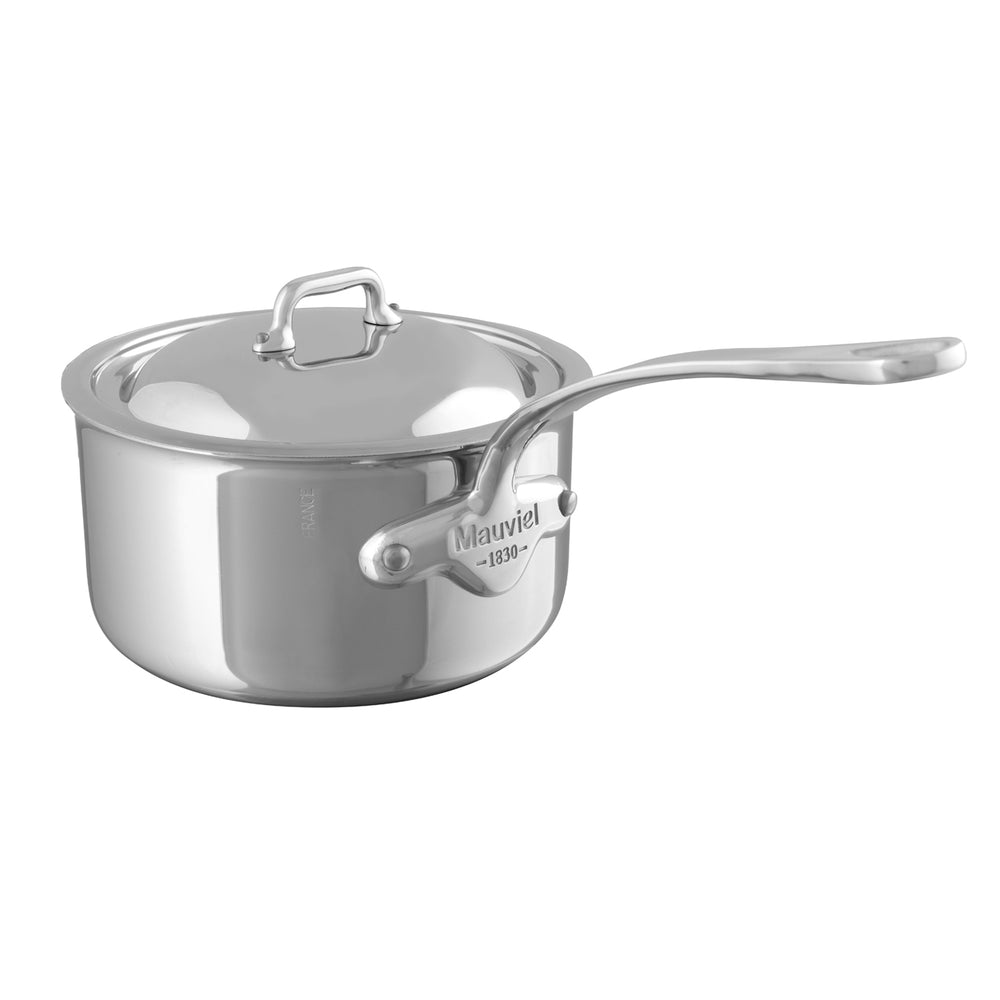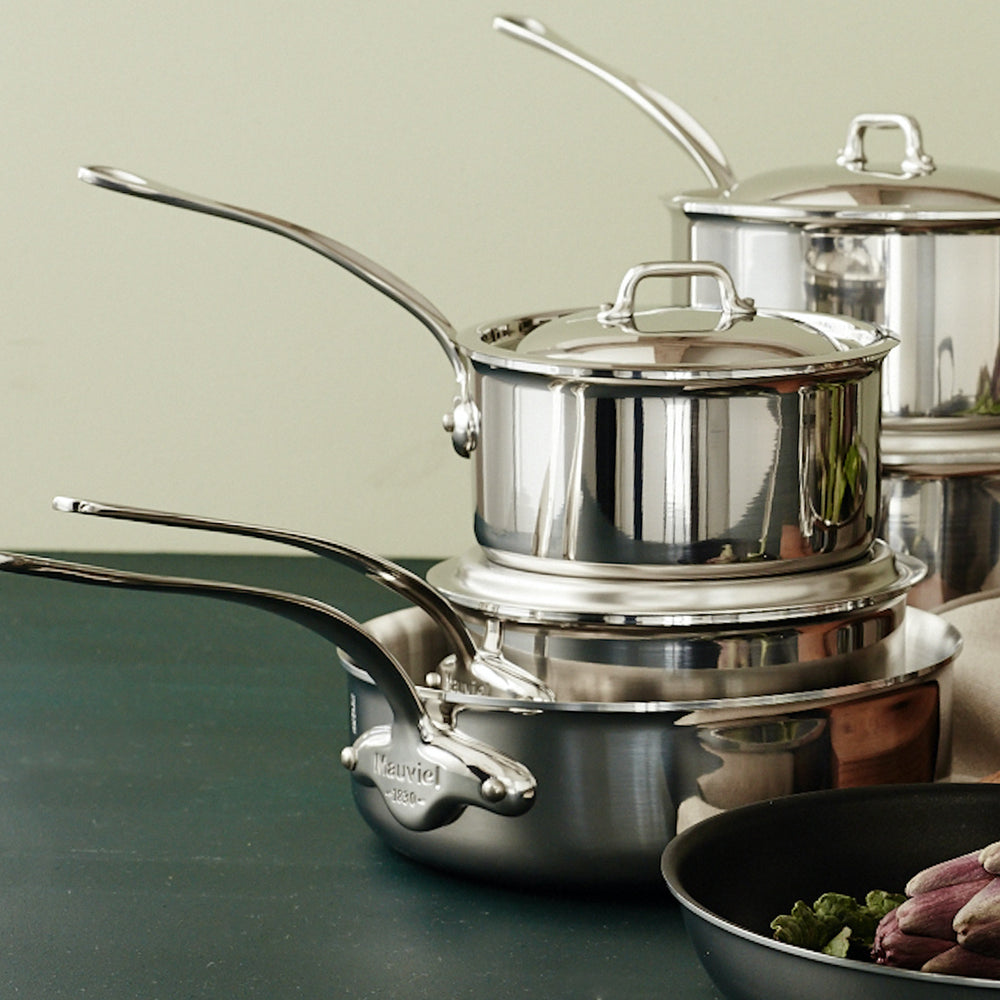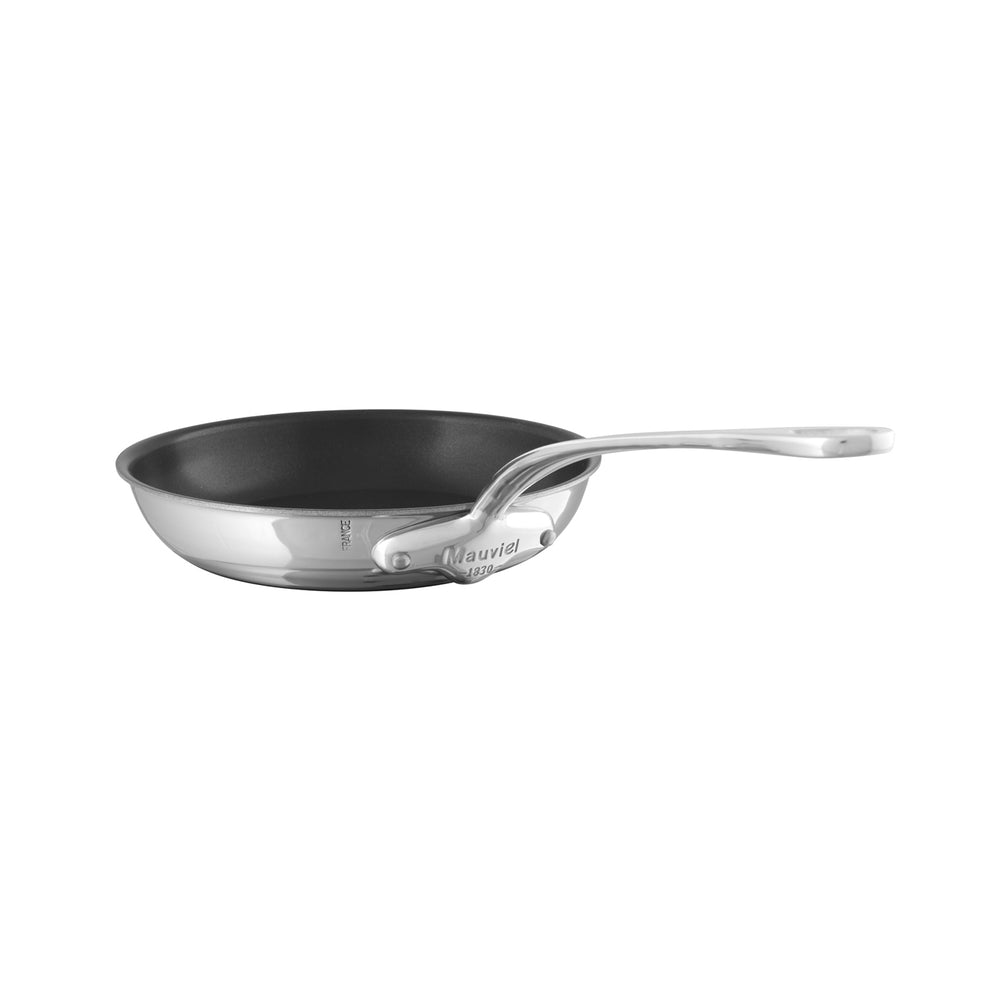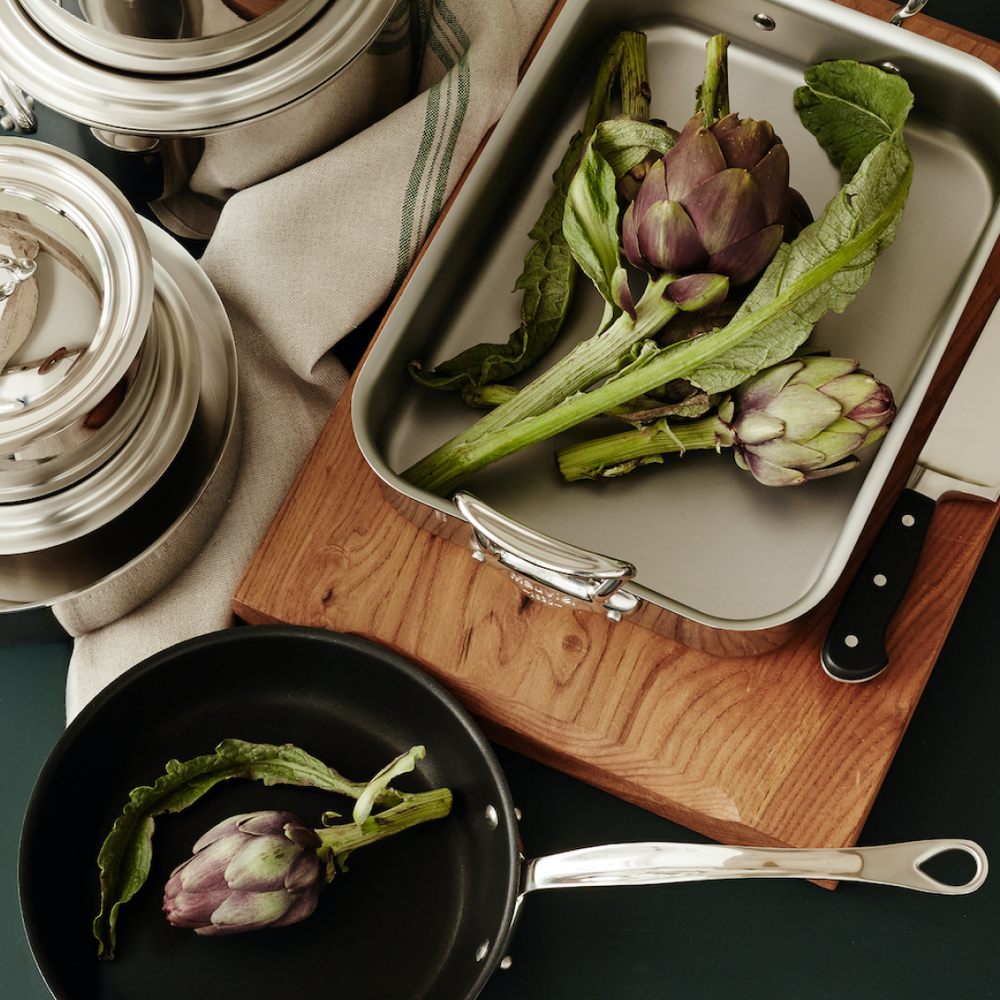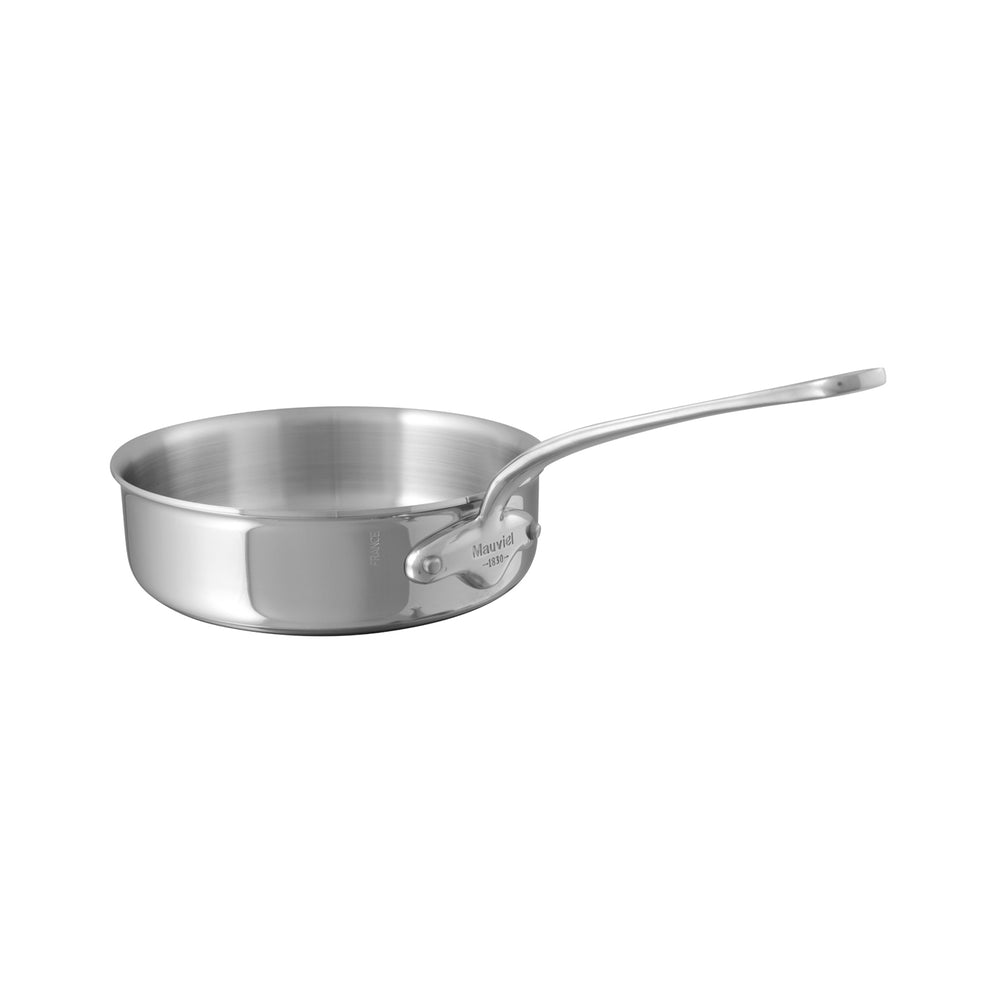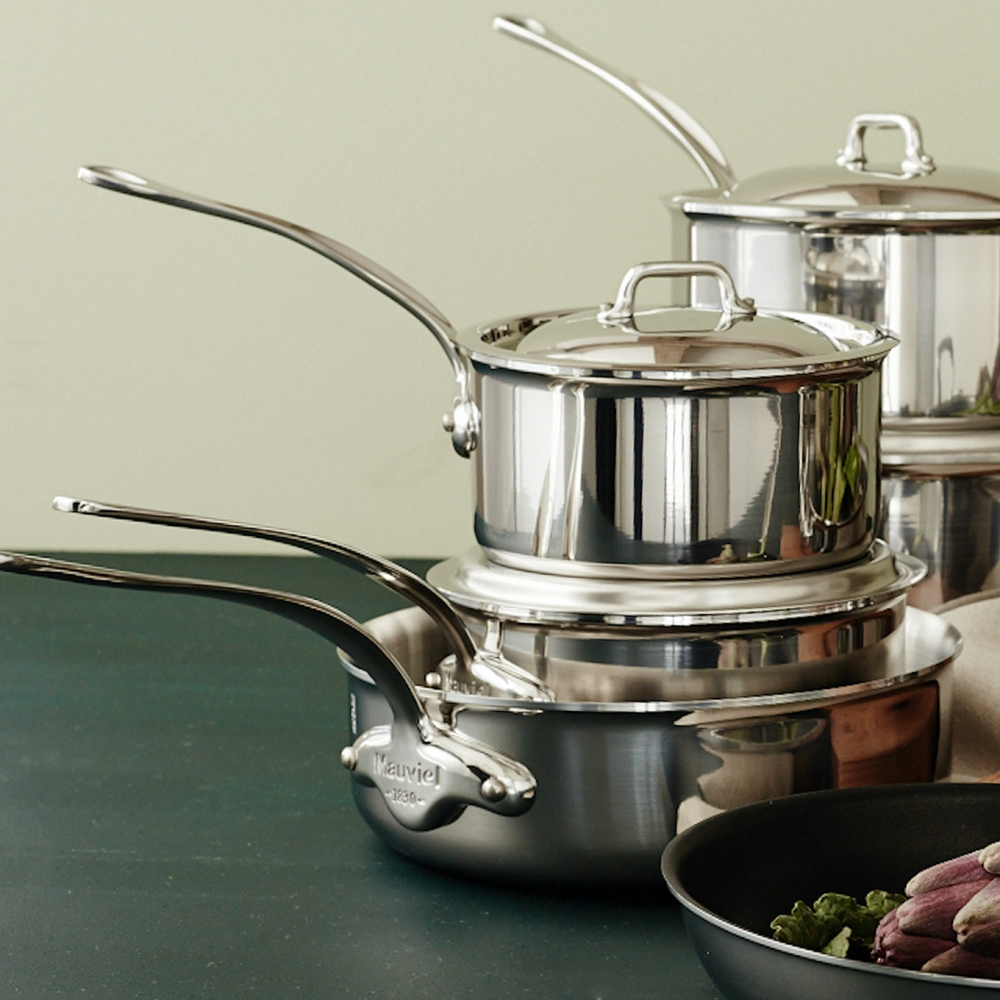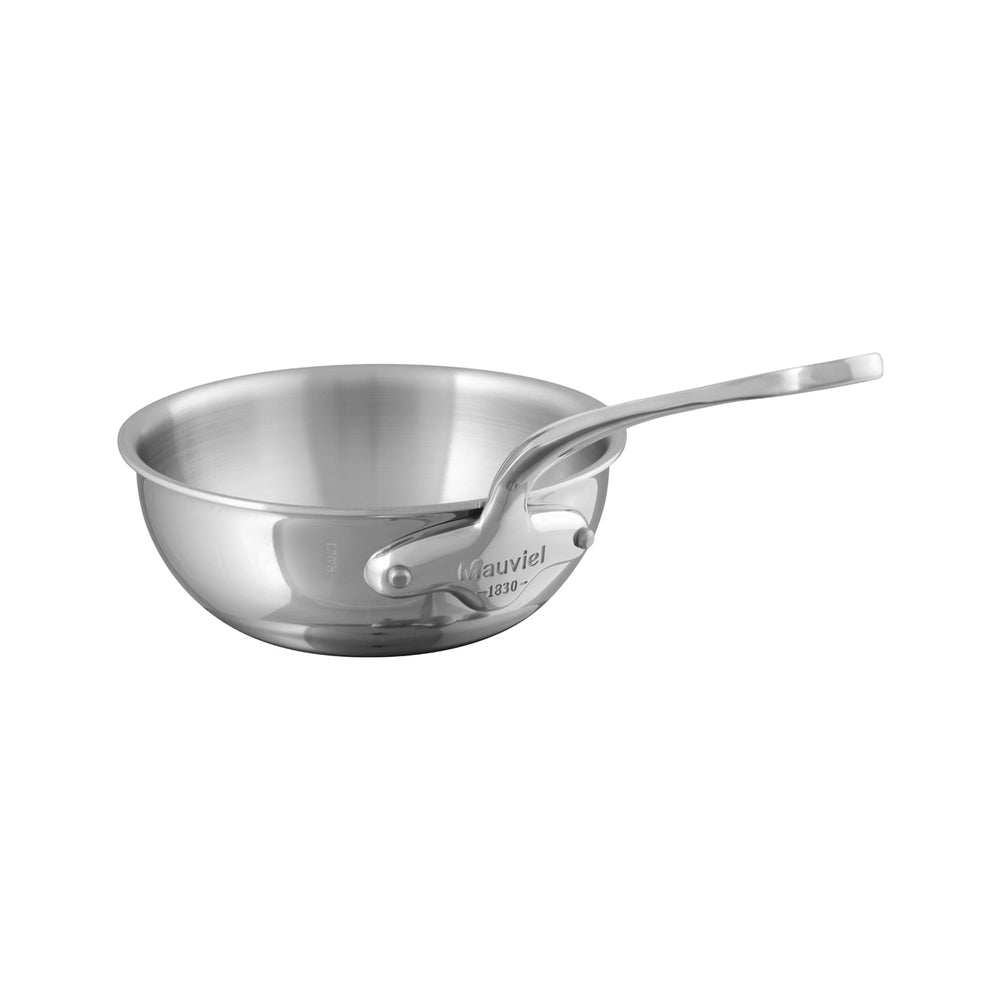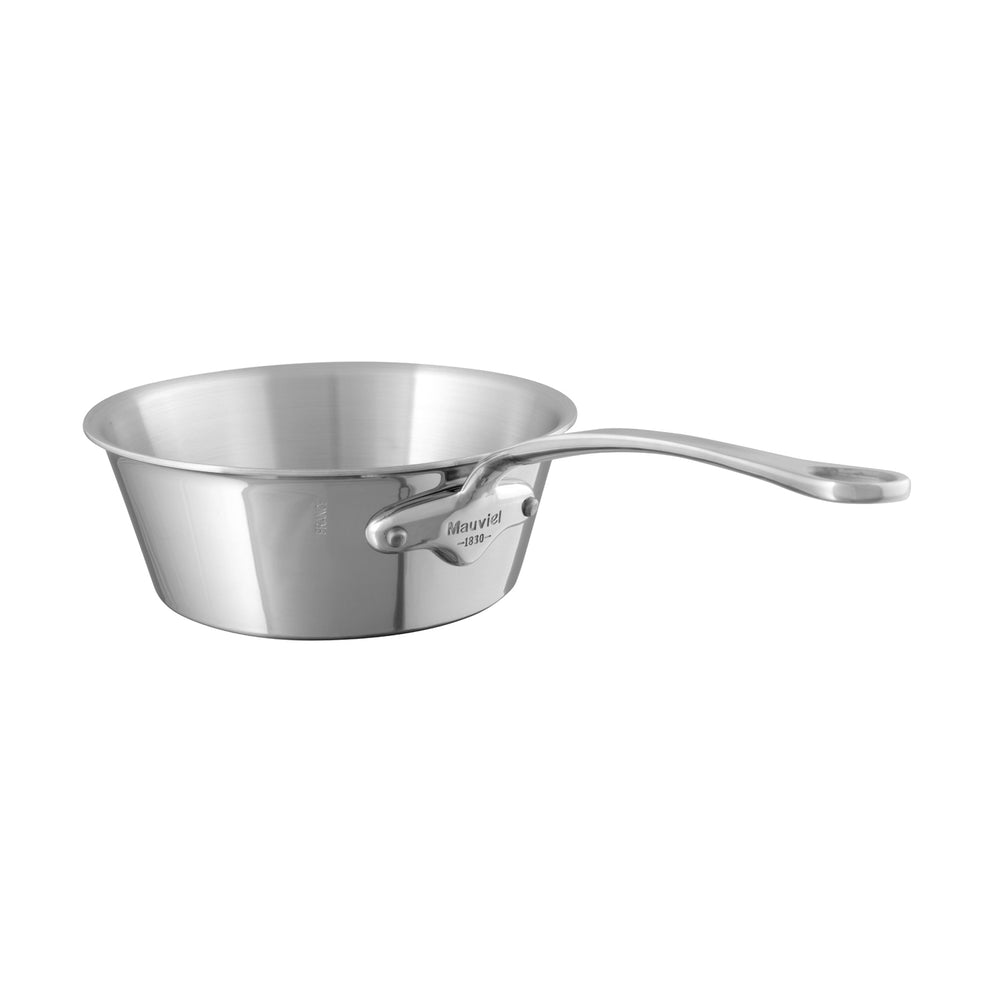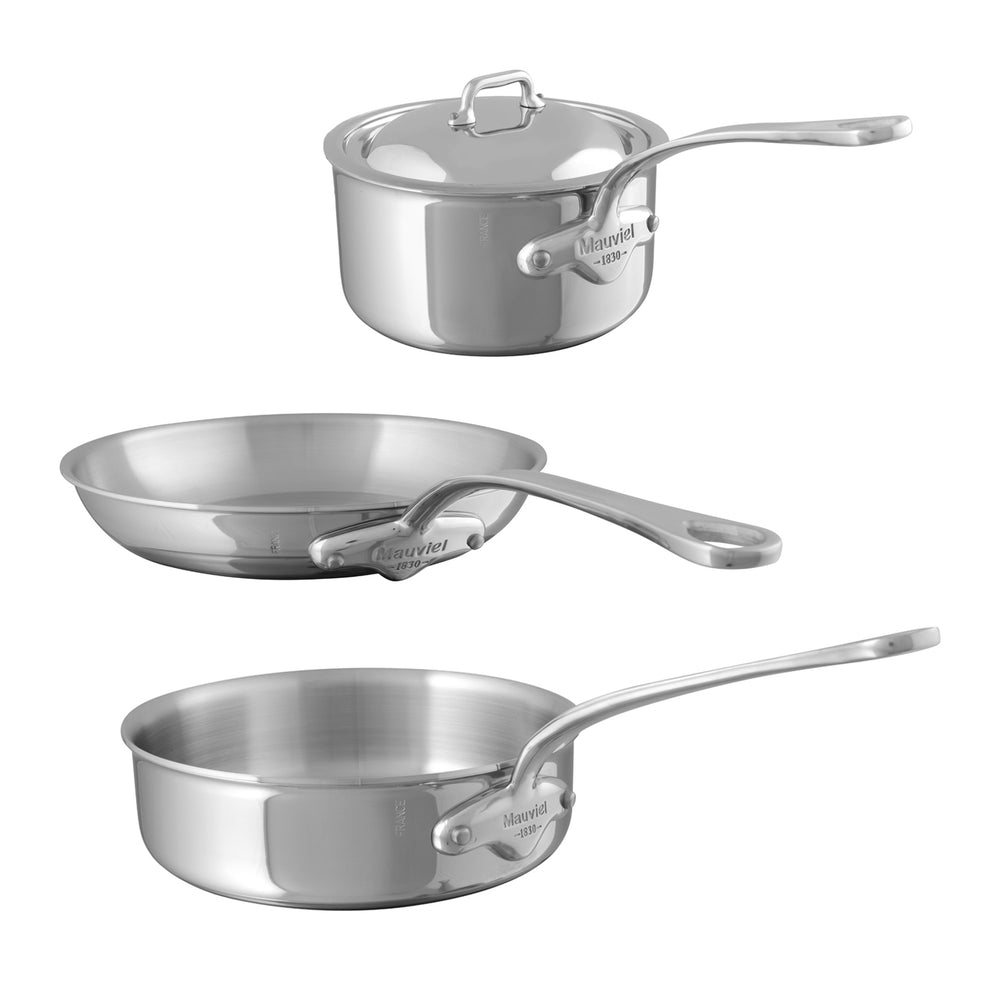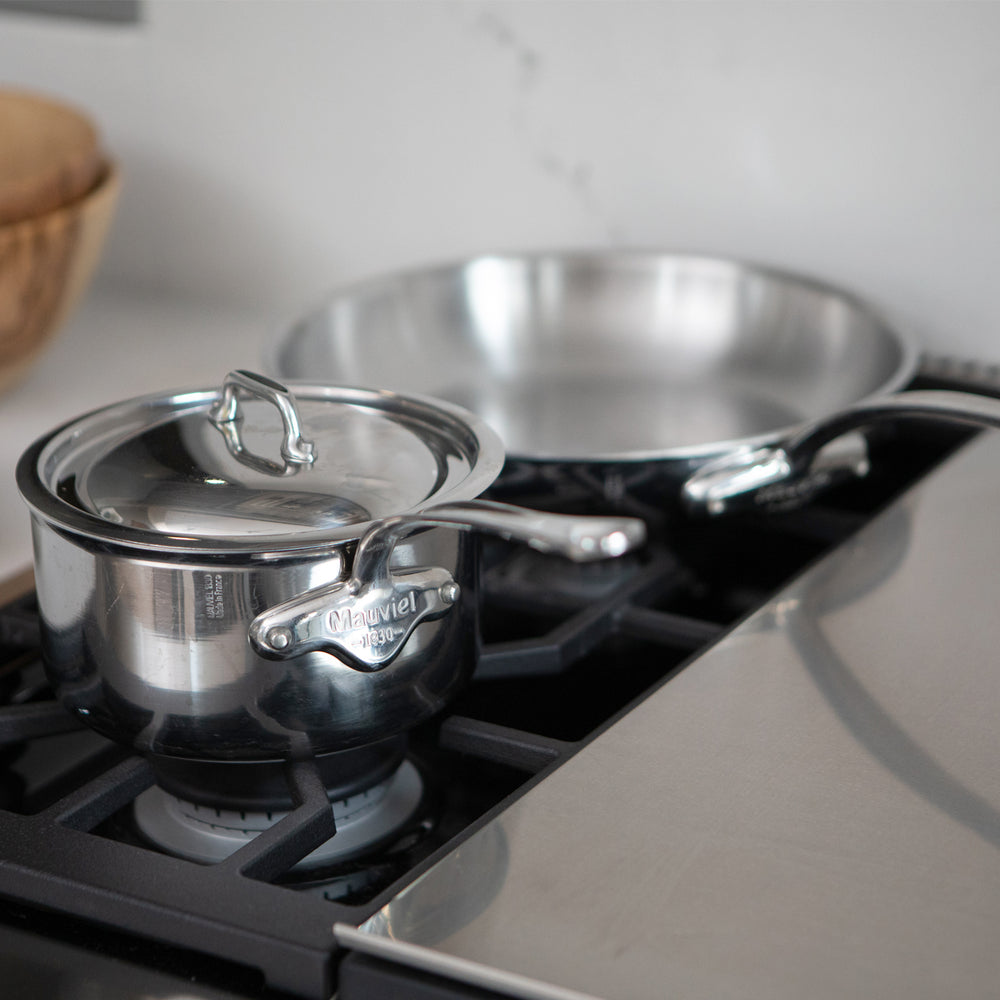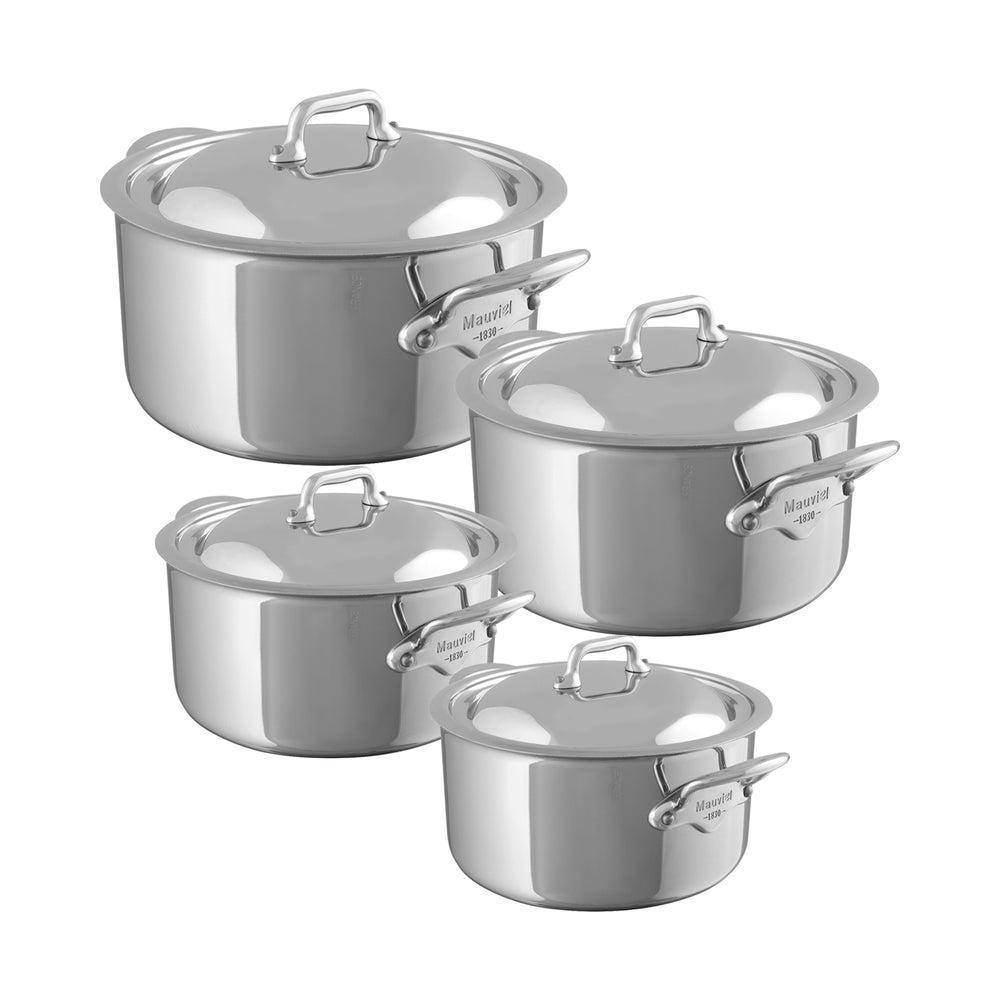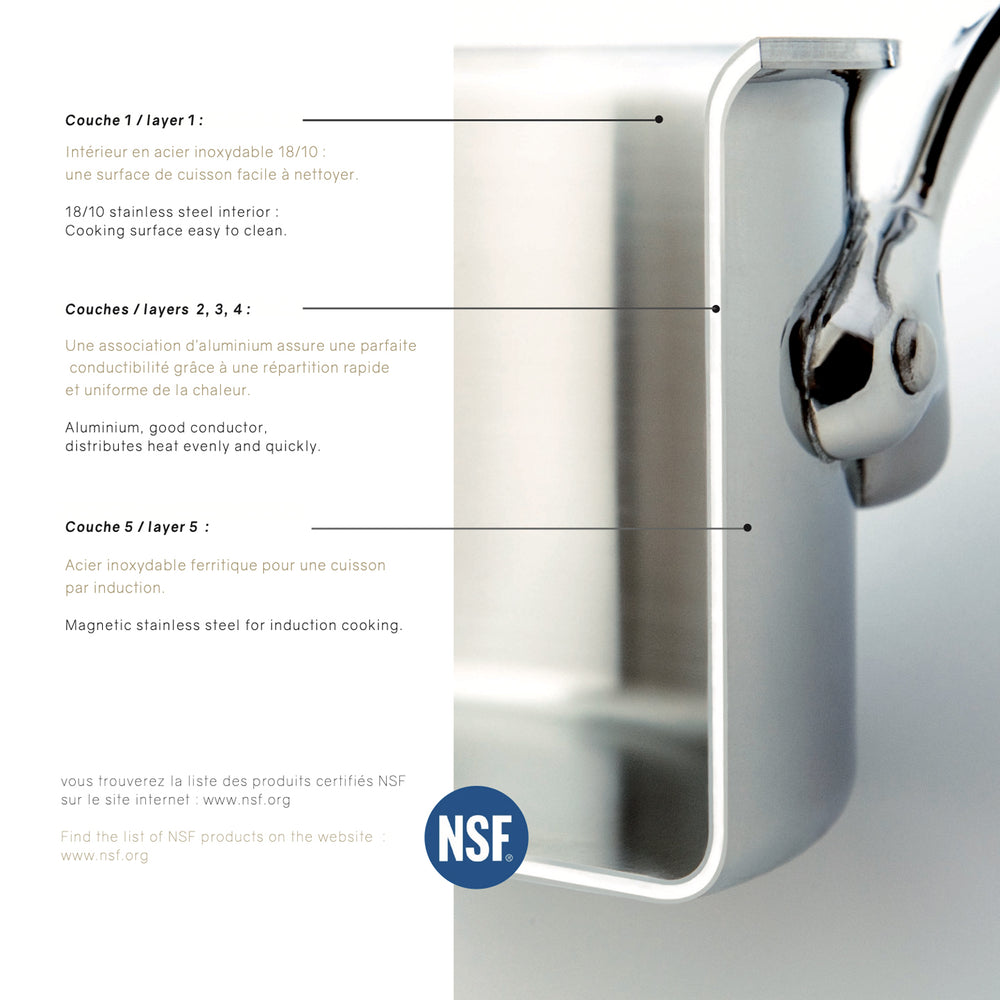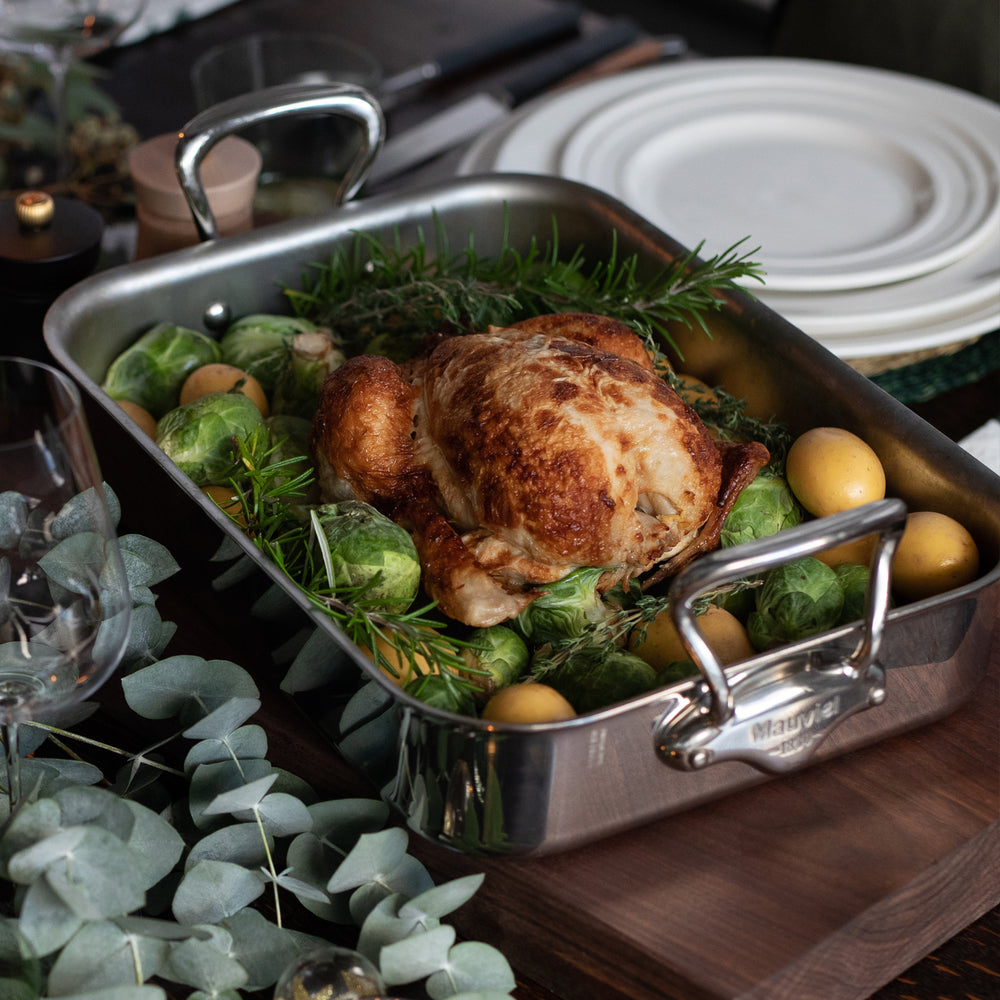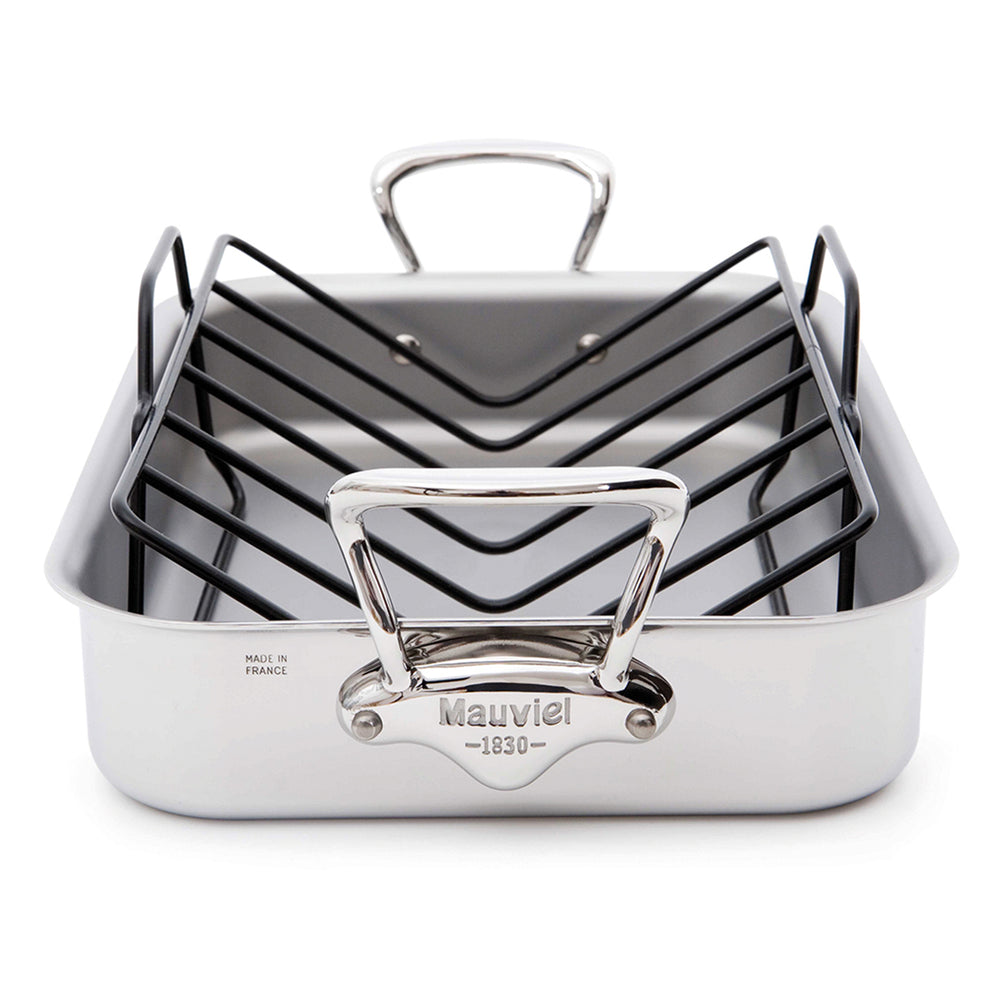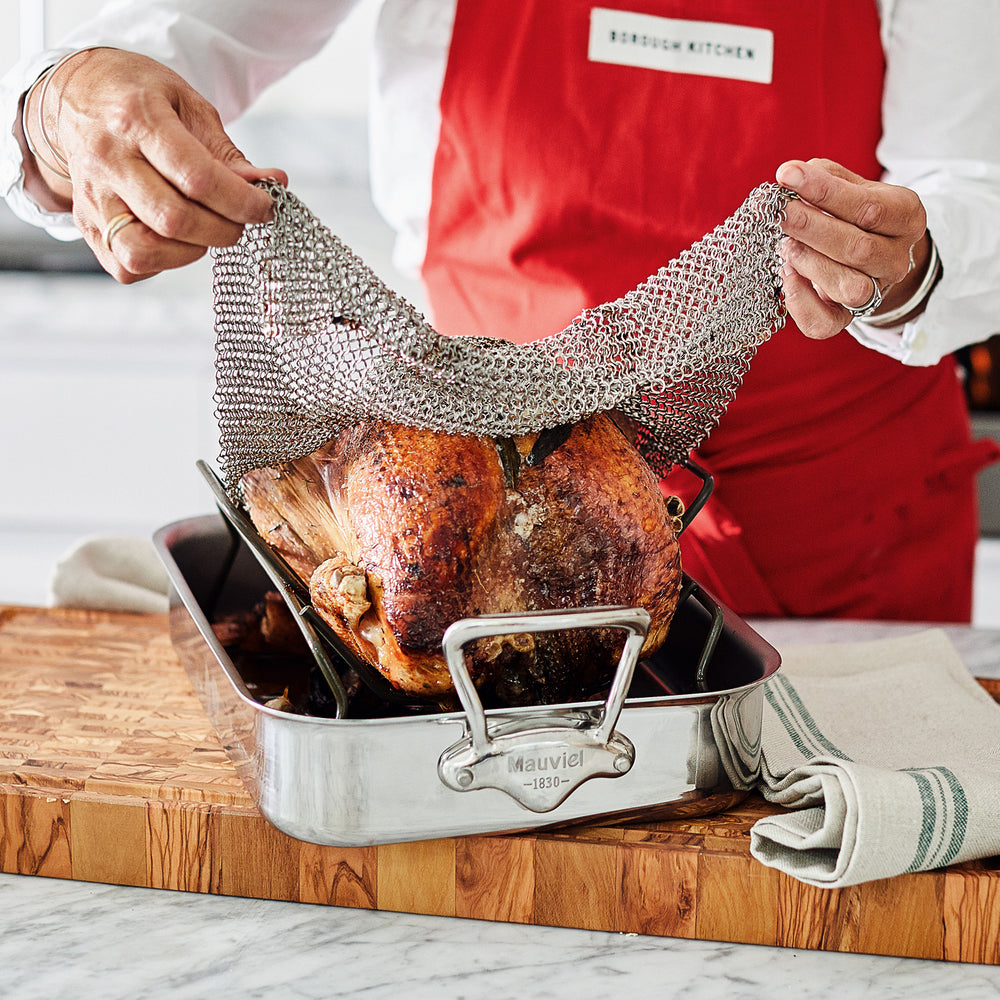A Guide to Stainless Steel Pots & Pans
Why Stainless Steel?
Since stainless steel pans are non-reactive, you can cook high-acid foods, like tomato sauce or lemony braises or baked beans, without worrying about discolouration or metallic tastes. Soups, stews, chillies, curries, anything with a high liquid-to-solid ratio – anything at all, really – is well taken care of by stainless steel. Yes, that includes eggs, which are known to cling to stainless steel pans, as well as steaks and other foods that require a good sear. It just requires a bit of know-how.
Cooking with Stainless Steel
How do you know when a stainless steel pan is hot enough for oil? Add a splash of water to your heated pan. It should form beads that bounce around the pan and join together to form one large bead. If the water fizzles and foams but doesn't form beads, your pan is too cold. If it forms lots of small beads that evaporate quickly, instead of bouncing around the pan and collecting into one bead, the pan is too hot. (For more info about this process, read our guide on how to make a stainless pan stick less.)
Another way you can aid this process is to make sure food isn't too cold before you add it to the pan. For example, when taking meat or vegetables out of the fridge, let it sit on your countertop for 10 to 15 minutes to adjust to room temperature and make a smoother transition to a hot pan.
One of the best things about a (high-quality) stainless steel pan is that it guides your cooking — for example, food will release from the pan once it's nicely browned, and that's the ideal time to turn it over. To force this too soon means sub-par taste and unwanted messiness. 'Be patient,' says Islington Store Manager Joe Roberts. 'Food – proteins especially – will typically release themselves once they’ve developed a good enough sear. How the food reacts to a quick wiggle of the pan will let you know if it’s time to turn or move it around.'
Hob & Oven Compatibility

Pictured: the Mauviel M'Cook Frying Pan, which is suitable for all hobs including induction.
Cleaning & Maintaining
- Always make sure the pan has cooled before you clean it (with soap, water, and a sponge). This is because placing a hot pan under cold water causes thermal shock, which could risk warping the pan.
- For stubborn stuck-on bits, soak your pan in water and soap for some time so it softens, then clean with a sponge or brush. Avoid harsh scourers like steel wool unless absolutely necessary, as they could scratch the pan.
- Water spots happen when the metal has prolonged contact with the oxygen in water. To avoid these, dry your pan as soon as you're done washing it. To get rid of them, add a bit of baking soda to the pan, then wash it with water and a sponge.
- If you notice chalky white spots on your pan, it's usually the steel reacting with calcium, an ingredient in hard water (looking at you, London). To get rid of them, you need something acidic like vinegar or lemon juice. Add a mix of vinegar or lemon juice and water to your pan (1 part acid, 2 parts water). Bring to a boil, let it cool, then wash as normal.
- Notice a blue-ish spot with rainbow-coloured edges on the bottom of a stainless steel pan that won't come off with regular washing-up liquid? That happens when the pan has been overheated – but not to worry, this has no effect on function. To remove the stain, dilute plain vinegar with water and rub this solution into your pan, very thoroughly, with a non-abrasive scrubber (a sponge or tea towel will do). Rinse and wipe dry.
- For general polishing and bringing your pans back to mint condition, a stainless steel cleaner like this one from Mauviel is your best bet.
Read our complete guide on how to clean a stainless steel pan.
What Is 'Tri-Ply', 'Multi-Ply', or '5-Ply'?
We also carry a few stainless steel pans that have 'sandwich bases'. This means that the heat does not move from base to edge, but is concentrated at the bottom of the pan, which has layers of stainless steel and aluminium. While not as heat responsive as multi-ply pans, they provide a good value alternative.
Brushed vs. Polished

Pictured: A selection of All Clad saucepans.
The Best Stainless Steel Pots & Pans on the Market
Mauviel M'Cook
All-Clad
-
D3 / Tri-Ply: The pans in All-Clad's original tri-ply range feel light to lift but are sturdy, with comfortable handles that mould to an underhanded grip and stay cool on the hob. The stainless steel on the exterior is polished, while the interior has a brushed finish that makes it stick-resistant and easy to clean. Shop All-Clad D3 / Tri-Ply pans and sets here.
-
D5: The All-Clad D5 5-ply range of stainless steel pans was designed with the high heat of induction hobs in mind. It has 18/10 stainless steel exteriors with two heavy-gauge layers of heat-responsive aluminium in the middle, plus a stainless steel core, which diffuses and spreads heat evenly and prevents warping. This also results in excellent heat retention, so your food stays warm long after you take it off the hob and to the table. Both the inner and outer parts of these pans are finished with brushed stainless steel. Shop All-Clad D5 pans and sets here.
- Copper Core: Copper is the best heat conductor out there. That's why All-Clad’s Copper Core range, which features a copper layer sandwiched between two layers of aluminium and stainless steel, is truly one-of-a-kind when it comes to heat responsiveness and even distribution. The shapes and finishes of these pans are similar to the D3/Tri-Ply range, but it has the added benefit of vented handles that stay even cooler as you cook. Shop All-Clad Copper Core pans and sets here.
Hestan
-
Nanobond: Hestan NanoBond cookware has a stainless steel base, aluminium core, and titanium surface that’s four times harder than stainless steel. This makes them highly resistant to warping, and heat-safe up to a staggering 565°C. They are suitable for any home oven, as well as barbecues. Titanium provides excellent heat retention, which keeps a stable, even temperature that browns and caramelises ingredients nicely. Titanium’s smooth surface also makes it more resistant to sticking, scratching, and pitting. The rims of these pans are sealed, meaning you can use them in the dishwasher without any worry of the edges getting sharper over time. Shop Hestan NanoBond pans and sets here.
-
CopperBond: Hestan CopperBond cookware has been optimised for induction hobs. These pans have five layers of metal: outer layers of stainless steel, supporting layers of aluminium, and a core of copper, a metal that provides unparalleled temperature control. The wraparound stainless steel base on each pan creates a greater contact area with the heat source, particularly useful for induction hobs. With copper sides and hanging loops, CopperBond pans are aesthetically pleasing as well as functional. They are not dishwasher-safe. Shop Hestan CopperBond pans and sets here.
- ProBond: Hestan ProBond tri-ply stainless steel pans have a core of heat-responsive aluminium for optimum performance. Expect quick, even heat distribution and lifetime durability. They are lighter to lift, with only three layers of metal, and the rims are flared for drip-free pouring. The rims are also sealed – which means they can be cleaned in the dishwasher without any risk of the edges becoming sharp over time. Shop Hestan ProBond pans and sets here.
Silampos


